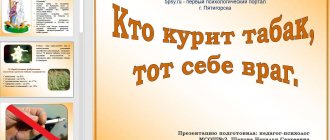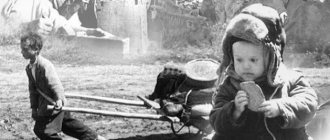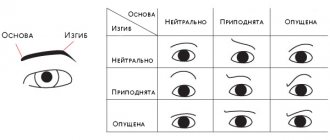Summary of the extracurricular lesson “Me and my emotions”
-Emotions are what a person experiences in different situations, what he feels.-Emotions can be positive, negative and neutral.
-Positive emotions are joy, fun, happiness, kindness... We can experience them, for example, when we are given gifts for our birthday, when we walk with friends and communicate...
-Negative emotions are fear, fear, anger, resentment... We experience them when something unpleasant happens, for example, when we get a bad grade at school, when we quarrel with friends...
-Neutral emotions – they express emptiness. These include curiosity, contemplation, surprise and indifference. For example, I'm reading a book and I'm curious to know how it ends.
- Listen to the teachers.
-My mother will start to worry and worry. She will be scared for me. She will start calling me and asking where I am and why I was late. She will be angry that I didn't keep my promise to come home on time.
-She can experience peace of mind that nothing happened to me (which is why I was delayed), she will be pleased that I apologized and showed attention. But she might feel anxious the moment I go back home.
-A person can experience more than just one emotion in one situation. He can experience many different emotions in her (both positive and negative). For example, in a certain situation he may experience fear, excitement, joy, etc.
-Yes, you can determine. For example, if a person laughs and has fun, then we can say that he experiences positive emotions: joy.
-And I believe that it is not always possible to determine a person’s emotions, because... he can hide them. He may laugh, but in reality he is afraid at this moment. But in order not to show this, a person hides these emotions.
- Listen to the teachers.
-Feelings are what a person feels while experiencing a particular emotion.
- Listen to the teachers.
-They differ in that we can experience feelings for a long time, but we show emotions only in a certain situation. For example, I may experience feelings of fear and anxiety all day because... I heard bad news this morning. And emotions can change during this day (I can be happy for a friend’s success - I got an A for a lesson, then I can feel curiosity - what are two of my classmates whispering about, etc.).
-Feelings have constancy (have constancy), and we experience emotions in a certain situation. And they can change.
-Emotions and feelings may have similarities. When we experience emotions, we experience certain feelings at that moment. For example, a person is scared (the emotion is fear), then he immediately begins to have a feeling of anxiety, fear, excitement, tension, apprehension...
-We experience certain feelings when we show certain emotions.
-A person can experience feelings of panic, courage, falling in love, security, hopelessness, envy, pity...
For example, emotions can manifest themselves in facial expression (if a person is not happy, he begins to frown) and in body movements. For example, if a person is nervous, his hands may shake, his voice may change, etc.
For example, if a person experiences negative emotions - anger, this can lead to aggressive behavior (the person may start screaming, calling names, fighting, etc.).
-Yes, a person must control his emotions.
-For example, two friends had a big fight and one of them starts to get angry because of this, cry, hit his school bag with his fists, and stops talking to everyone. He was very upset. In such a situation, he must pull himself together and understand that doing so is pointless and wrong. It’s better to sit down, calm down, collect your thoughts, and then go to your friend and ask for forgiveness.
For example, during class, a classmate told Petya a joke. The boy laughed a lot, began to rejoice and have fun, even fell from his chair to the floor from wild laughter. In this case, Petya also needs to pull himself together (calm down, stop laughing), understand where he is (in class during a lesson), remember the rules of behavior at school and in society (laughing like that is indecent) and be sure to apologize to everyone for his behavior. behavior.
- Listen to the teachers.
-Maybe it’s anger, aggression, joy, fear.
Anger is an emotion that a person experiences when he is angry or angry.
For example, when two people argue strongly and cannot agree with different points of view, they become angry and feel angry.
Aggression is a manifestation of anger. A person in an aggressive state can cause harm (he can hit another person or break something).
Joy is an emotion that expresses good mood and pleasure. We can feel joy when, for example, we were told a funny story, given a gift, treated to delicious candy...
Fear is an emotion we experience in case of danger. For example, a person will not go into a dark room, because... he is afraid of the dark, he becomes scared.
-Listen to the task.
- Listen to the teachers.
-I will be pleasantly surprised, I will experience delight, joy. I will smile, have fun, start jumping, laughing... I will deal with them like this: I will understand that everything needs to be in moderation and stop jumping, calm down a little, but still maintain my positive mood.
-I will worry, worry, feel anxious. I will constantly think about how my performance will go, walk around the room and repeat the text... I will cope with them like this: I will begin to calm myself down, set myself up for the best, that everything will go well, I will try to distract myself from the feelings of anxiety and fear and look into the window…
-In the first situation we experienced positive emotions (surprise), and in the second situation negative ones.
- Listen to the teachers.
-Children take their boxes of paper with the task.
-Children come up with situations and demonstrate emotions.
Class hour with presentation. Negative emotions and mood
Negative emotions and ways of expressing them”
Purpose of the lesson: to teach a variety of ways to express negative emotions. Objectives: - to help the child understand how anger accumulates in a person and how, when it then breaks out, it can injure those around him, and the person himself; - activate the sensory channels of perception so that the child can see, feel, “hear” irritation and anger, and thereby better understand their nature and meaning; - show and teach children safe ways to express negative emotions; - consolidate the acquired knowledge and skills in the child’s everyday life. Basic methods: • Verbal • Practical • Visual. Forms of work: • Individual • Group Methodological support: presentation; cards of different colors and shapes; cards with conflict situations; ball; photographs of a girl with emotions of anger and joy; petals with options to help an angry girl. The presentation is used throughout the lesson. PROGRESS OF THE CLASS - Hello guys! I'm very glad to see you. 1. Game-exercise “Pass a smile in a circle” (Slide 2) Teacher. I am in a good mood, and I want to pass my smile on to you in a circle (the teacher smiles at the child standing next to him, this child smiles at his neighbor, etc.). How are you feeling now? (Children's answers) The goal of our lesson is to learn various ways of expressing negative emotions. (Slide 3) Guys, how do you understand the word “emotions”? What emotions do you know? (Children’s answers) Emotions are our experiences in various life situations. Emotions can be positive and negative. (Slide 4) Today we will talk to you about negative emotions and learn how to manage them. What negative emotions do you know? (Children's answers) - Well done! Let's take a closer look at negative emotions. (Slide 5-11) 2. “Feelings and associations” (Slide 12) Teacher. I will now name you this or that feeling, and you will select an association for it, comparing the feelings with various objects or phenomena. -If anger were an animal, what would it be? -If resentment were a means of transport, what would it be? -If anger were a plant, what would it be? -If sadness were the weather, what would it be? -If shame were a vegetable, what would it be? -Well done! 3. “Depict the situation” Teacher. The next game is called “Depict the Situation.” We will work in pairs. But first you need to find your mate. I'll give out half cards. You must find your soulmate and make a whole card. As soon as we decide on the pairs, I will invite one of the pairs and he will pull out a card with inscriptions on the topic of various conflict situations. “The boy is angry,” “The girl is swinging her fist at someone,” “Two students are calling each other names,” “The girl is crying, she was offended,” “The boy was beaten, he is offended,” “Two students are fighting over a book.” Each couple will wordlessly depict the situation they have been given, and we will try to guess. All clear? Begin. 4. “What feelings arise during a quarrel?” Teacher. Now I invite you to remember your conflict situations and the sensations and feelings that you had. Let's think for 2 minutes. Do you remember? Who is ready to share their situation. 5. “Unfinished sentences” (Slide 13) Teacher. I will throw the ball, the one who has it in his hands must answer my question. Is the task clear? “Students quarrel when...” “A quarrel ends in a fight if...” “A quarrel ends in tears if...” “When another person is in pain...” “When I’m in pain, I...” 6. Game “King Borovik” Teacher. Reads a poem. King Borovik walked straight through the forest, he shook his fist and tapped his heel. King Borovik was not in good spirits: The king was bitten by flies. What is the king’s mood? (Children’s answers) How did you guess? (Children’s answers) Physical exercise “King Borovik”
(V. Prikhodko).
The teacher reads a poem and asks the children to act according to the text. (Slide 14) Teacher. Oh, what should I do? How many angry kings! What will help me? 7. Warm-up “Chopping wood.” How many of you have ever chopped wood or seen (knows) how it’s done? Who can show? How should you hold the ax, in what position should your legs be? Show me how thick a piece of log you want to cut? Place it on a stump and raise the ax high above your head. Whenever you bring down the ax with force, you can loudly shout, “Ha!” (Repeat 5 times) 8. Game “Magic Flower” (Slide 15) Teacher. This morning I went to school and saw a girl (the teacher shows a photo of a girl with the emotion of anger) (Slide 16). She sat on a chair all alone. What is her mood? (Children's answers) Teacher. What would you do if you were me? Children offer options for helping an angry girl. A photograph of a girl with the emotion of anger is placed in the center. Children take turns choosing petals with options for helping the angry girl written on them. When the magic flower is composed, the teacher invites the children to close their eyes and changes the central photo of an angry girl to a cheerful one (Slide 17). Teacher. Why do you think the miracle happened? (Children's answers) Reflection This concludes our lesson.
We did a good job today. -Please tell me, did you like the classes? (Children's answers) -What conclusions did you draw for yourself? (What is the most important thing you learned from this lesson?) (Children’s answers) Thank you guys for the lesson. May you always have positive emotions and a good mood! (Slide 18) Goodbye! Presentation on the topic: Negative emotions and ways to express them
We recommend watching:
Summary of a psychological lesson for 5th grade schoolchildren on the topic: “Friendship”
Similar articles:
Summary of a psychology lesson in 11th grade. Self confidence






